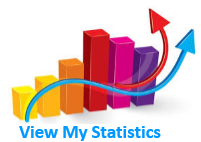Kepadatan Larva Aedes Aegypti di Daerah Endemis Demam Berdarah Desa dan Kota, Hubungannya dengan Pengetahuan dan Perilaku Masyarakat
DOI:
https://doi.org/10.18196/mmjkk.v12i1.1001Keywords:
house index, countainer index, Demam berdarah dengue, Aedes aegypti, perkotaan, pedesaan, Dengue haemorrhagic fever, urban, ruralAbstract
Demam berdarah dengue (DBD) adalah penyakit penting yang disebabkan oleh virus dan ditularkan melalui gigitan nyamuk Aedes aegypti. Kejadiannya cenderung meningkat setiap tahun dan lebih banyak di perkotaan. Perbedaan karakteristik masyarakat kota dan desa menyebabkan perbedaan perilaku terhadap program pencegahan, sehingga berdampak pada kepadatan larva yang menjadi indikator keberhasilan. Penelitian ini mengungkap hubungan pengetahuan dan perilaku masyarakat dengan kepadatan larva Aedes di kota dan desa. Penelitian bersifat noneksperimental di wilayah endemis DBD kota dan desa di DIY. Variabel bebas adalah pengetahuan dan perilaku masyarakat, variabel tergantung adalah CI (Container index) dan HI (House Index) . Observasi dilakukan terhadap kontainer terkontrol dan tidak terkontrol. Pemeriksaan laboratorium untuk menentukan spesies larva. Data pengetahuan dan perilaku masyarakat didapatkan dari kuesioner dan dinilai dari skor jawaban benar. Responden adalah pemilik rumah yang diperiksa. Hasil menunjukkan CI dan HI desa (20,00% dan 37,31%) > CI dan HI kota (3,62% dan 3,62%). Ada perbedaan signifikan pengetahuan (p=0,002) dan perilaku (p=0,001) antara masyarakat desa dan kota dengan pengetahuan dan perilaku masyarakat kota lebih tinggi. Ada hubungan signifikan pengetahuan (p=0.00) dan perilaku (p=0,032) dengan kepadatan larva di desa, namun tidak signifikan di kota (pengetahuan p=0,065; perilaku p=0,067). Disimpulkan pengetahuan dan perilaku pencegahan DBD masyarakat kota lebih baik daripada desa.
Dengue haemorrhagic fever (DHF) is an important disease that transmitted by Aedes aegypti. Incidence rate is tend to increase yearly and even more in urban areas. Differences between towns and villages community’s character impact to different behavior to face the prevention program, so have an impact on larval density. This research would like to reveal the relationship between knowledge and behavior with density larvae, comparing it between cities and villages. Research is nonexperimentally, locate in city (Wirobrajan) and village (Dusun Pepe) in DIY province. Independent variables are knowledge dan behavior score, while dependent variable are CI and HI. Observations to containers whether controlled or uncontrolled. Knowledge and behavior obtained from the questionnaire, calculate by scoring to correct. The respondent was the owner of the house who inspected their larvae. The results show that HI and CI in village (20.00%; 37,31%) is higher than city (2.62%;2.62%). There are significant differences knowledge (p = 0.002) and behavior (p = 0.001) between two communities. There is a significant relationship between knowledge (p = 0.00), behaviors (p = 0,032) and larval density in rural, but no significance in urban (knowledge p=0,065; behavior p=0,067). It was concluded that the knowledge and behavior of prevention of urban society might better than rural.
References
Anonim. Demam Berdarah Dengue. 2009. Diakses tanggal 21 pebruari 2009 dari http:// id.wikipedia.org/wiki/demam_berdarah
Depkes RI. Pedoman Survei Entomologi Demam Berdarah Dengue. Jakarta. 2002.
Supartha, I.W. Pengendalian Terpadu Vektor Virus Demam Berdarah Dengue, Aedes aegypti (Linn.) dan Aedes albopictus ( Skuse ) ( Diptera: Culicidae). Pertemuan Ilmiah Dies Natalis Udayana, 3-6 September 2008, Bali. 2008.
Depkes RI. Database Kesehatan Per kabupaten. 2009. Diakses tanggal 20 Januari 2012 dari http://www.bankdata.depkes.go.id/propinsi/public/report/createtablepti.
Paryudi, Y. Karakteristik Masyarakat Desa. 2008 . Diakses tanggal 20 Pebruari 2009 dari http://prayudi.staff.uii.ac.id/2008/09/22/ karakteristik-masyarakat-desa/
Soekanto, S. Sosiologi, Suatu Pengantar Psikologi. Edisi baru keempat. Jakarta: Pegrankindo Persada. 1998.
DepKes RI. Database Kesehatan Per Kabupaten. 2012 . Diakses tanggal 20 Januari 2012 dari http://www.bankdata.depkes.go.id/ propinsi/public/report/createtablepti.
Bhandari, K.P., Raju, P.L.N., and Sokhi, B.S. Application of GIS Modeling for Dengue Fever Prone Area Based on Socio-Cultural and Environmental Factors- A case Study of Delhi City Zone. The International Archives of the Photogrammetry, Remote Sensing and Spatial Information Sciences. Vol. XXXVII. Part B8. Beijing 2008. Diakses tgl 20 April 2013 dari http://www.isprs.org/proceedings/XXXVII/congress/8_pdf/2_WG-VIII-2/03.pdf
Wahyono, T.Y.M., Haryanto,B., Mulyono,S. dan Adiwibowo, A. Faktor-faktor yang berhubungan dengan kejadian DBD dan upaya penanggulangannya di Kecamatan Cimanngis, Depok, Jawa Barat. Buletin Jendela Epidemiologi. 2010 ; Vol. 2.
Setiadi, E.M. Ilmu Sosial dan Budaya Dasar. PT Kencana Prenada Media Group, Jakarta. 2006.
Trisnawati, Gama, T.A., Rahayuningsih, Betty, F. Analisis Faktor Risiko Kejadian Demam Berdarah Dengue Di Desa Mojosongo Kabupaten Boyolali. 2009. Diakses 23 April 2013 dari http://www.publikasiilmiah.ums.ac.id/ handle/123456789/2612
Downloads
Published
Issue
Section
License
Copyright
Authors retain copyright and grant Mutiara Medika: Jurnal Kedokteran dan Kesehatan (MMJKK) the right of first publication with the work simultaneously licensed under an Attribution 4.0 International (CC BY 4.0) that allows others to remix, adapt and build upon the work with an acknowledgment of the work's authorship and of the initial publication in Mutiara Medika: Jurnal Kedokteran dan Kesehatan (MMJKK).
Authors are permitted to copy and redistribute the journal's published version of the work (e.g., post it to an institutional repository or publish it in a book), with an acknowledgment of its initial publication in Mutiara Medika: Jurnal Kedokteran dan Kesehatan (MMJKK).
License
Articles published in the Mutiara Medika: Jurnal Kedokteran dan Kesehatan (MMJKK) are licensed under an Attribution 4.0 International (CC BY 4.0) license. You are free to:
- Share — copy and redistribute the material in any medium or format.
- Adapt — remix, transform, and build upon the material for any purpose, even commercially.
This license is acceptable for Free Cultural Works. The licensor cannot revoke these freedoms as long as you follow the license terms. Under the following terms:
Attribution — You must give appropriate credit, provide a link to the license, and indicate if changes were made. You may do so in any reasonable manner, but not in any way that suggests the licensor endorses you or your use.
- No additional restrictions — You may not apply legal terms or technological measures that legally restrict others from doing anything the license permits.






